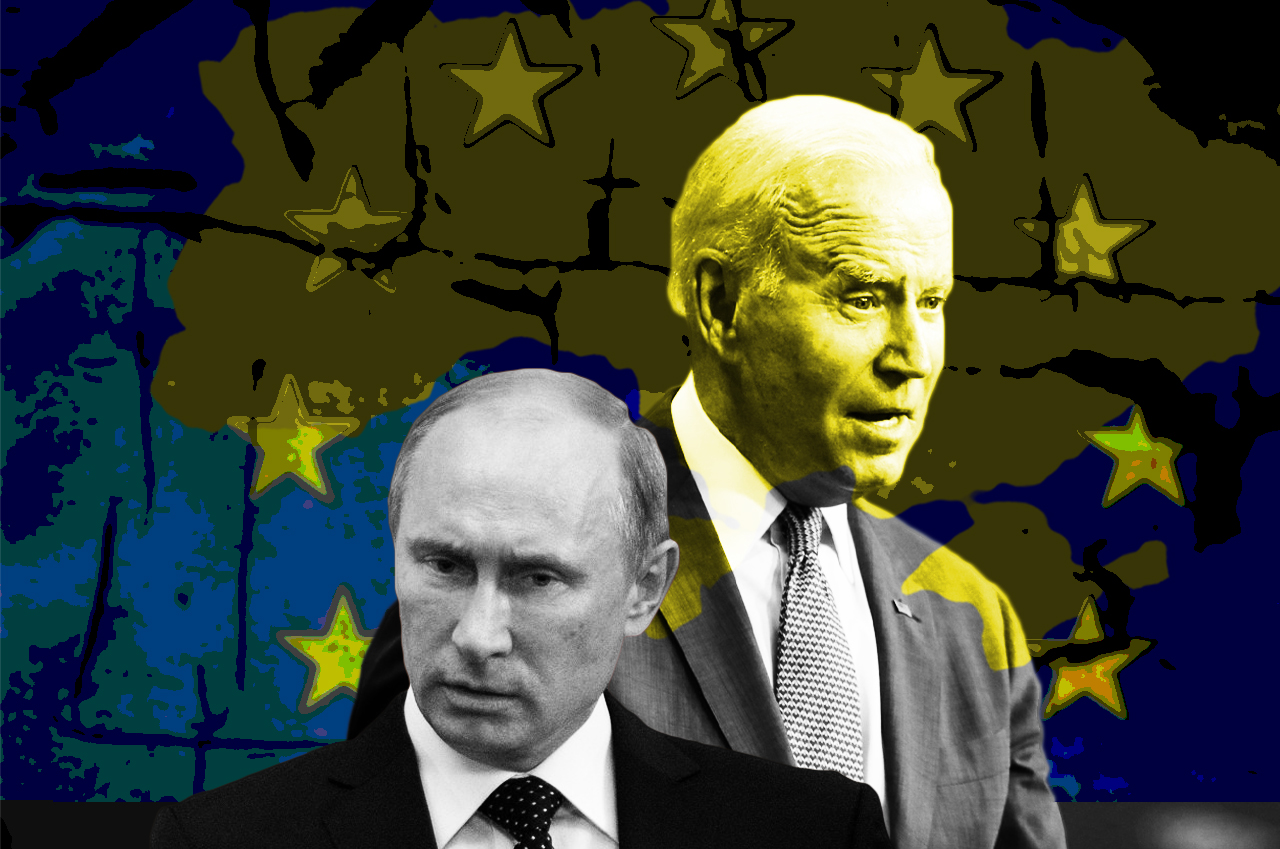
The cost of energy has been soaring. There are very real worries amongst the representatives of the European ruling class that this could lead to deindustrialisation, unemployment and an almighty response from the working class. There is talk of a new winter of discontent.
It is clear that, for much of the European ruling class, a quick end to the war would be desirable. However, the United States is far more insulated from soaring gas prices. Furthermore, it stands to benefit from the weakening of both Russia and Europe, whereby the latter would become all the more dependent on the US. Although, it must also be said, this same policy is also pushing Russia into China’s arms whilst weakening the US’ main ally. Nonetheless, the Biden administration – as long as it remains in control, although that is uncertain with midterm elections looming – for now looks set to continue pushing ahead with its support for the war effort. This is putting Europe under immense pressure.
On 1 February 2021, the European benchmark for natural gas was 15 EUR/MWh. On 26 September 2022, it reached 174 EUR/MWh. This is over ten times the average of the previous decade. Europe’s energy costs normally account for around 2 percent of GDP, but this figure has now reached 12 percent. The impact of the war in Ukraine has exacerbated the problem, but the increase of energy prices had clearly already started with the generalised global inflation that came with the opening up after the COVID lockdowns.
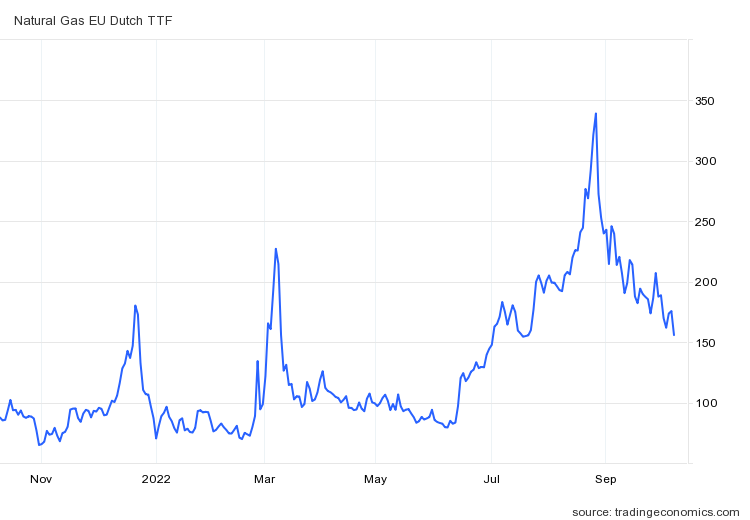
As we have explained before, this war represents a conflict between Russia on the one hand and western imperialism, using Ukraine as a proxy, on the other. A lot of the blame for the current crisis has been laid at the door of Vladimir Putin. However, while Russia is certainly attempting to impose economic pain on the West, this is retaliation for the sanctions imposed on the former by western governments themselves. Both sides are using sanctions to try and destabilise the other side, and the price increases are a result of this.
The European Union has been attempting to wean the region off Russian energy. With the oil and gas industry representing about a fifth of Russian GDP and almost half of its budget revenues so far this year, losing this source of income would be very dangerous for Putin. It is therefore in his interests to retaliate. To that end, Russia has been slowly strangling the supply of gas to the EU. And while this has reduced sales, it has massively increased revenues. For example, while Gazprom, the Russian energy company, has exported 43 percent less gas this year, the gas it has exported has gone from $310 per cubic metre to $1,000 per cubic metre.
On 2 September, Russia stepped up its campaign, with Gazprom announcing the complete shutdown of the Nord Stream 1 gas pipeline. Putin declared they would “not supply anything at all if it is contrary to our interests. No gas, no oil, no coal, no fuel oil, nothing”. The Kremlin added that supplies would not resume until the “collective west” lifted the sanctions against Russia.
Pressure builds on Europe
This is causing chaos across Europe, much of which has been reliant on Russian gas. For example, in 2021, at least 15 European countries sourced at least half of their gas supply from Russia. While this reliance differs hugely by country, the pressure is building up on the whole continent.
Alex Munton, an analyst of global gas markets, has said that “there’s genuine uncertainty whether there will be sufficient gas to meet demand through the winter”. Foreign Policy writes that “much of Europe’s winter energy outlook” will now “hinge on [reducing] energy demand; countries’ abilities to secure supplies of liquefied natural gas [LNG]… and the weather”.
The energy crisis brings out the unplanned and anarchic nature of the capitalist system, as well as the limits of the nation state. With gas from Russia becoming less available, there is no coordinated and planned response. Instead, we have a “scramble to secure LNG cargoes”, as the boss of a gas company based in Asia has called it. Each government looks to secure the interests of their own ruling class first, thereby making the overall situation worse by pushing up the prices even further.
This soaring cost, however, causes more problems. The price of natural gas in the US has nearly tripled over the last year, which, alongside the impact of generalised global inflation, is leading to pressure to curb its export from the country. You also see a similar situation in Australia. These countries have two of the top three largest LNG export capacities in the world.
The war, which is itself a product of capitalism in crisis, has accelerated the pressure on energy markets, thus provoking a big race between each government to secure enough resources to power their economy. This is leading to wild price swings, which puts pressure on existing supply chains and has the potential to make a large number of European businesses uncompetitive on the global market. If this happens, the result would be widespread layoffs and the possibility of large scale closures across the continent.
European countries have so far managed to meet the EU’s targets for storage, with facilities being around 90 percent full. However, as Munton also explains, normally, in order to get through winter, both the stored gas reserves and continued imports from Russia are required.
As well as seeking out alternative supplies, there is an agreement to voluntarily reduce demand for gas by 15 percent this winter. Over the summer, consumption did fall by 138mn cubic metres a day, which represents a decline of 16 percent. However, in order to maintain this reduction over the winter, the saving would have to increase to 300mn cubic metres a day. Demand will therefore have to be reduced even further at a time when there is increased need for energy during the cold winter months.
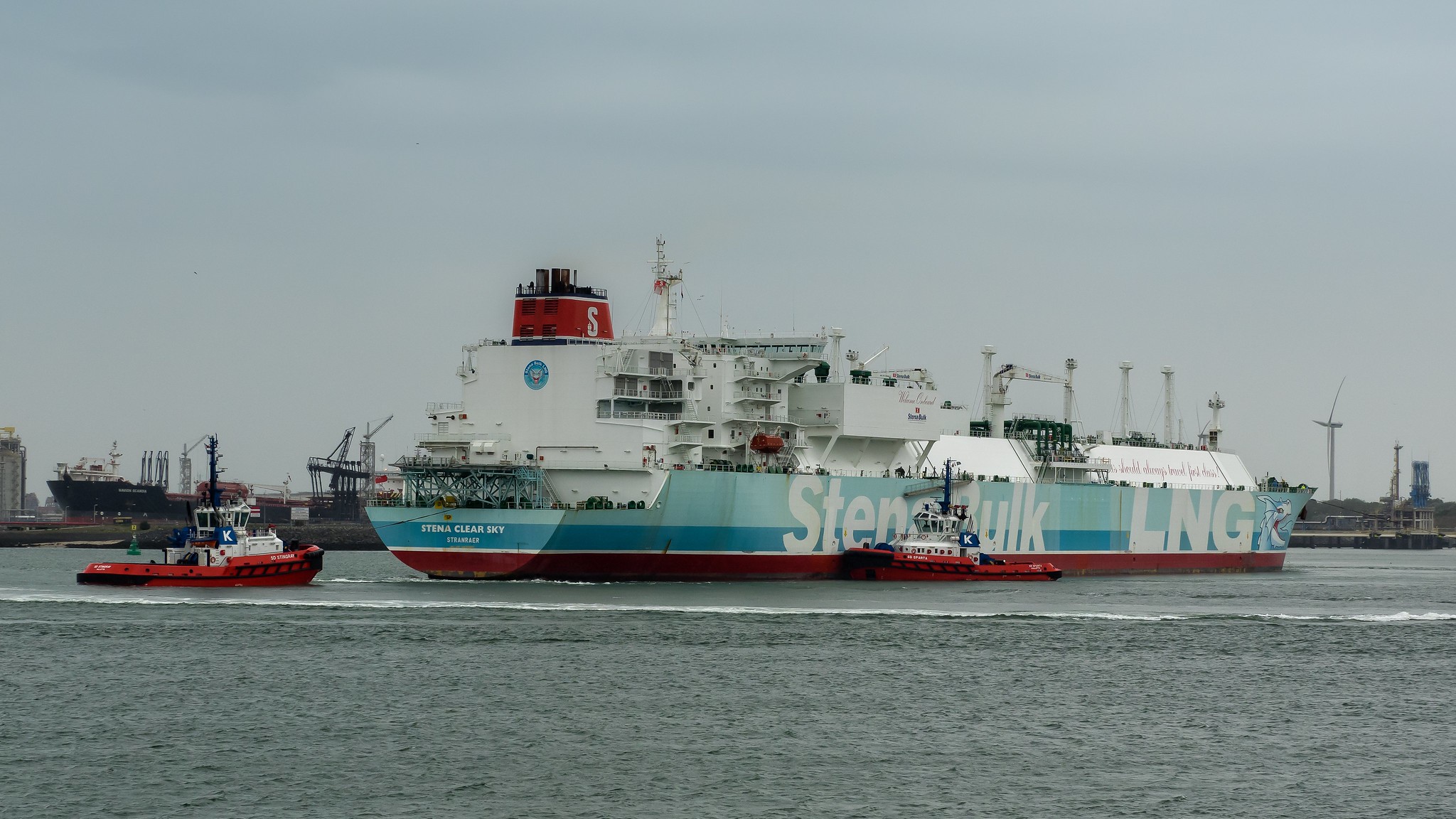
Falling output
While on the face of it the reduction in demand that has been achieved so far appears to be a success, it may be something of a pyrrhic victory. For example, in July, Germany consumed 21 percent less gas compared to the same month the year before. The Association of German Industry, however, argues that, while some of this reduction will be due to efficiency savings, the vast bulk was due to a “dramatic” fall in industrial output.
Similarly, the Euro area as a whole saw the biggest monthly fall in production since April 2020, when much of Europe was locked down due to the COVID-19 pandemic. Far from being something to celebrate, therefore, this could just be the first sign of the newly weakened position of European goods on the world market. Rather than conscientiously reducing the use of energy, we have the shutdown of production because the input costs have become too high to operate profitably.
The concern amongst European capitalists, therefore, goes well beyond a mere reduction in profit margins. As an economist for Capital Economics explains, what we could be looking at is “some permanent loss of competitiveness” for the Eurozone economy. Indeed, 12 groups representing various industries from cement to steel have said that “there is currently no business case to continue production in Europe”. A tenfold increase in the cost of gas means a tenfold increase to a major input in these industries. This then passes through the supply chain to sectors as varied as cars and beer. If commodities produced in Europe are less competitive relative to rivals in the US or Asia, there is the danger of significant deindustrialisation across the European continent.
The impact is clear when it comes to the metal industry. ArcelorMittal, Europe’s largest steelmaker, has said that the surging prices are putting a “heavy strain” on their competitiveness and so plan to temporarily close some blast furnaces from October. The market value of Thyssenkrupp, another large steelmaker, has halved since January of this year. Paul Voss, director-general of European Aluminium, has declared the crisis “existential”. Also, as Ami Shivkar, an analyst of aluminium markets, points out, restarting smelters is not an easy matter: It takes a “humongous amount of capital”. These shutdowns, therefore, can’t be brushed away as something temporary. Even if the war ended and energy prices were brought back to previous averages, it could be uneconomical to start these industries up again.
A wider crisis
When it comes to assessing what the impact will be on the economy of Europe as a whole, it is important not to approach the question mechanically. We cannot just take an individual industry, separated from everything else, in order to work out the damage. The world economy is a complex and interrelated system. If there is a crisis in one part of the economy, this can then feed up through the production chain, thereby spreading the crisis.
For example, Piesteritz, Germany’s largest producer of ammonia and urea, recently shut down its factories in Saxony-Anhalt. This has then meant an increase in the cost of fertiliser, which is itself exacerbated by the shutdown of around 70 percent of European fertiliser production largely due to soaring gas prices. This lack of fertiliser has led to a shortage of CO2, meaning that many companies in the beverage industry have had to “reduce their production or stop it altogether”. There are many more examples of a similar nature.
As well as the threat of unemployment and pressure on wages and terms and conditions, there is the spectre of inflation, which currently stands at 9.1 percent in the Eurozone, and is itself exacerbated by a number of factors. First of all, production losses in Europe will make the continent increasingly reliant on imports from abroad, which could be costlier. Secondly, the dollar is strengthening. When the world economy is in trouble, capitalists tend to move their money into the US dollar. This then puts pressure on all other currencies, including the Euro, which has sunk to its lowest level since 2002.
Alongside increased costs, there is pressure on consumption. First of all, the fact that the living standards of working-class people are being forced downwards means that many are cutting back their spending. This can be seen by the fact that consumer confidence in the Eurozone is at record lows – lower even than during the 2008 financial crisis and during the COVID lockdowns. On top of this, widespread lockdowns in China, Europe’s third-largest destination for exports, is also dampening down demand. Soaring inflation, mounting costs and shortages of inputs for industry, and sinking demand are all therefore piling in on top of one another.
EU and governmental response
In response to the crisis, both the EU and European governments have been forced to act. On 9 September, the Eurozone’s energy ministers met and agreed to focus on four areas: 1) reductions in electricity demand; 2) a windfall levy on non-gas power production; 3) a gas price cap; 4) provision of cash to power producers.
However, the European Union is made up of competing nation states which, in a time of crisis, look all the more to secure the interests of their own ruling class, and are much less willing to cooperate. This was demonstrated by the fact that, as the above-quoted article from the Financial Times points out, as soon as details about how a price cap or windfall levy would work are discussed, agreements break down. Indeed, it has been reported that the levy on windfall profits might have to be delayed by a year. Laurent Ruseckas, an analyst at S&P Global Commodity Insights, has said that the complexity of the proposals meant that they would not be ready for winter, “even if there were political consensus behind them – which there isn’t.” It doesn’t seem likely, therefore, that these measures will be much help in dealing with the very pressing energy crisis this winter.
In the absence of a collective approach, EU governments will have to respond individually. Some have introduced caps on energy bills; France and Germany have nationalised energy providers; and Finland and Sweden have had to shovel emergency cash to power producers in an attempt to avoid a “Lehman Brothers collapse”. It is estimated that the total amount spent to provide what minimal help there is to shield working-class people and support the economy amounts to around half a trillion Euros, with think tanks such as Bruegel worrying that this is “clearly not sustainable from a public finance perspective”. What we are seeing, then, is that even if this problem is ‘solved’ to some extent in the present, all this means is the further building up of state debt, which will eventually need to be paid back. It also demonstrates what little faith the capitalists really have in their own system. Just as was the case during the Second World War, when there is a real crisis, they do not rely on the market to solve things. Instead, the state has to step in to support the system.
Ballooning government debt is particularly problematic at this moment in time. Under the impact of generalised global inflation and the weakening of the Euro, the European Central Bank is under pressure to increase interest rates. This drives up the price that governments have to pay in order to borrow money on international capital markets, which is a particular problem for governments like Italy. Indeed, the 10-year bond yield (essentially the interest rate the government has to pay to borrow money over a ten-year period) increased to 4.7 percent on 27 September, which is almost five times higher than the start of the year. This is the highest level since the European debt crisis a decade ago, when Italy was on the brink of a sovereign debt crisis.
The coming storm
What is taking place in Europe right now is preparing the way for a massive upsurge of the class struggle. As Alexander De Croo, the Prime Minister of Belgium, points out: “A few weeks like this and the European economy will just go into a full stop… The risk of that is de-industrialisation and severe risk of fundamental social unrest.”
The recent period has seen a series of protests, with some having slogans in favour of neutrality over the war. In early September, there were mass demonstrations in the Czech Republic of between 70,000 and 100,000 people. Demands included the resignation of the government and opposition to both the cost of living crisis and Czech involvement in the war. Similarly, in mid-September, around 20,000 protested against high inflation and fuel prices in Moldova, demanding the resignation of the pro-Western government, with some claiming that slogans shouted included “America, go home” and “no to cold winter”.
If you were just to read the western media, you would be forgiven for thinking that Putin had misplayed his hand and had unwittingly united the West against him. A previously-divided alliance had been convinced to fight for ‘peace’, ‘justice’ and the ‘self-determination of Ukraine’. We have seen a “stunning show of unity against Russia”, according to the New York Times. This war may be costly but, as the NATO secretary-general explained, this cost is only “counted in dollars, euros and pounds, while Ukrainians are paying with their lives.”
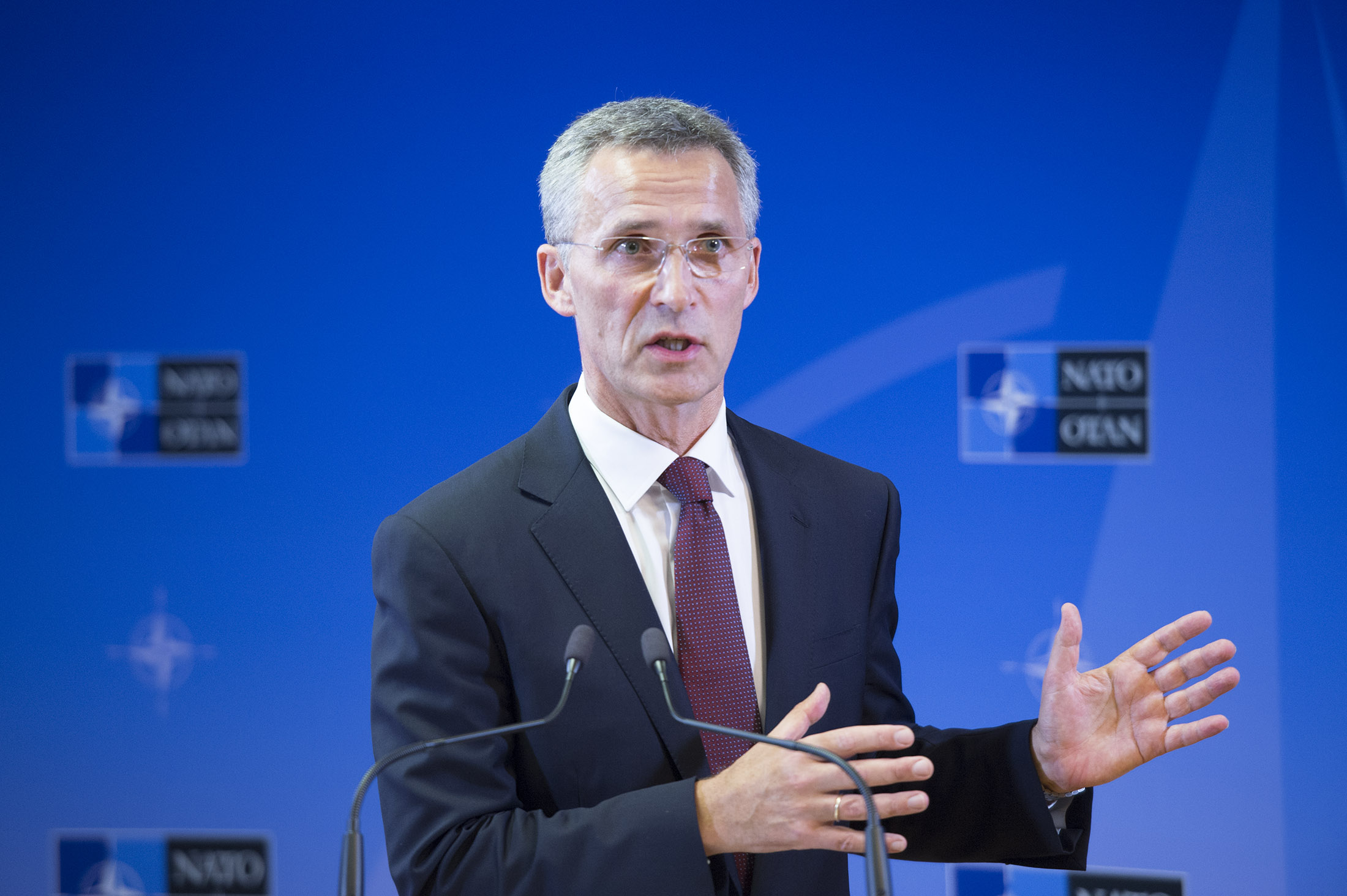
However, while Jens Stoltenberg can sit smugly in his well-heated office in Brussels and maintain this line of argument, things will be very different for the European working class. This winter, Europeans will be receiving their energy bills and many will be forced to choose between heating or eating. In fact, even before the impact of the surge in energy costs, there were around 657,000 deaths annually due to cold temperatures in Europe.
While Stoltenberg may be somewhat insulated from the heat of the class struggle, this is much less the case for European governments. Helima Croft, a bourgeois analyst, has warned of the possibility of a “winter of discontent”. Increased pressure on people’s living standards will force working-class people into action, which will in turn put pressure on their governments.
There is evidence of growing worry about the war across Europe. In June, a poll of people in nine EU countries was carried out by the European Council on Foreign Relations. The results showed that 35 percent wanted an end to the war even if it meant Ukraine conceding territory to Russia, while only 22 percent were more concerned with Russia being “punished for its aggression, even if it meant prolonging the war”.
Worry and divisions
Italy in 2020 relied on gas for 43 percent of its energy needs. It is therefore deeply exposed to price fluctuations. Public opinion, moreover, is somewhat split in the country, with 27 percent of Italians blaming America, the EU or Ukraine for the war rather than Russia.
On 25 September, an alliance of right-wing parties won the general election in the country. Giorgia Meloni, the leader of the largest party in the alliance, has always been a supporter of NATO and publicly supports the war effort in Ukraine. In line with this approach, in August, they pledged “support for the EU, the Atlantic alliance [NATO] and Ukraine’s resistance to Russian aggression.”
However, Italy’s former ambassador to NATO describes the support shown from Matteo Salvini and Silvio Berlusconi, the leaders of the other two parties in the alliance, as being “half-hearted”, and it is not hard to see why he says this. On 4 September, Matteo Salvin called for the reconsideration of sanctions against Russia. Meanwhile, Silvio Berlusconi reportedly warned members of his party that “tough sanctions would drive Moscow into China’s arms while triggering job losses in Italy”.
These pro-business parties will also have taken note of a protest by Italian business people, which blamed Brussels rather than Putin for high energy bills. The soaring energy costs will put immense pressure on the government to do something, but Italy and the rest of Europe also have immense pressure at their backs from US imperialism.
As we have written before, the energy crisis is particularly acute for Germany, which relied on Russia for one third of its oil and over half of its gas before the war. This explains why Germany has been more reluctant than the US or Britain to provide heavy weapons to Ukraine.
There are deep worries about the future amongst German workers. The mood was well expressed by Marlies Jakob, who phoned in to a radio show in Germany in July. She explained that she was happy to endure cold showers and wear three sweaters if that was to stop the war. However, “the opposite was true”, she said. “Thanks to sanctions… prices are rising and Russia is raking it in as never before.”
Public discontent has been reflected politically, too. In August, the left wing of the SPD issued a public call for peace with Russia. Additionally, Jens Koeppen, an MP for the right-wing CDU, has opportunistically criticised the oil embargo on Russia for “[hurting] us more than they hurt the Russians”. As Andriy Melnyk, Ukraine’s ambassador to Germany up until the end of September, argues, “the more people worry about the rising cost of living, about how they’re going to heat their homes, the less solidarity they’ll have with Ukraine.”
In response to the crisis, the Chancellor Olaf Scholz has announced a “double ka-boom” spending package of 200bnEUR. This has, however, provoked “animosity” amongst other European states. Giorgia Meloni’s top adviser has called it “an act… which undermines the reasons for the union.” This package, which will push up Germany’s state debt even further, again demonstrates the weaknesses of the European Union. In response to the crisis, you do not have the pooling of resources in order to make sure that the entire bloc survives. Instead, it is ‘every man for himself’ as each government looks only to secure the interests of their own ruling class.
On face value, it would seem that France should be somewhat isolated. However, while 70 percent of its electricity comes from nuclear power, 32 nuclear reactors are currently out of action due to various maintenance problems. Emmanuel Macron in the past seemed to be pushing more for a peace deal than the belligerent British or US, which was illustrated by his professed desire to “not humiliate Russia”.
Macron is also the first French President for 20 years not to command a majority in parliament. The two second-largest groupings, Mélenchon’s left-wing NUPES and Marine Le Pen’s right-wing National Rally, both, to some extent, try to appeal to working-class people on economic issues. Moreover, it should be remembered that the initial spark for the insurrectionary Yellow Vests movement in 2018-9 was the proposed increase of taxes on fuel, which hit many workers who rely on their cars to get around. As the pain from the energy crisis increases, the pressure on Macron to push for a peace deal will therefore increase from many different sides.
War of attrition
What we will see over this winter is a war of attrition between Putin and the West, with each attempting to increase pressure on their opponent. Towards the end of August, it looked as if the cracks in the Western alliance were beginning to show. According to the Financial Times, Josep Borrell, the chief diplomat of the EU, admitted that “certain political factions in the bloc wanted the EU to drop its support for Ukraine, push Kyiv into a ceasefire and abandon sanctions against Russia to ease economic pressure on European countries.” The same article indicated that Czech politicians had been “calling for a new attitude from the EU.”
This growing attitude meant the Ukrainian side desperately needed some sort of victory in order to keep the flow of funds and weapons. The offensive on the Kharkiv front and Russia’s defeat provided such a victory. For the time being, it seems that this has bought them some time. A few weeks after the beginning of the counter-offensive, one European diplomat was quoted as saying that the “tone has shifted” and that no one was “talking against more weapons now”.
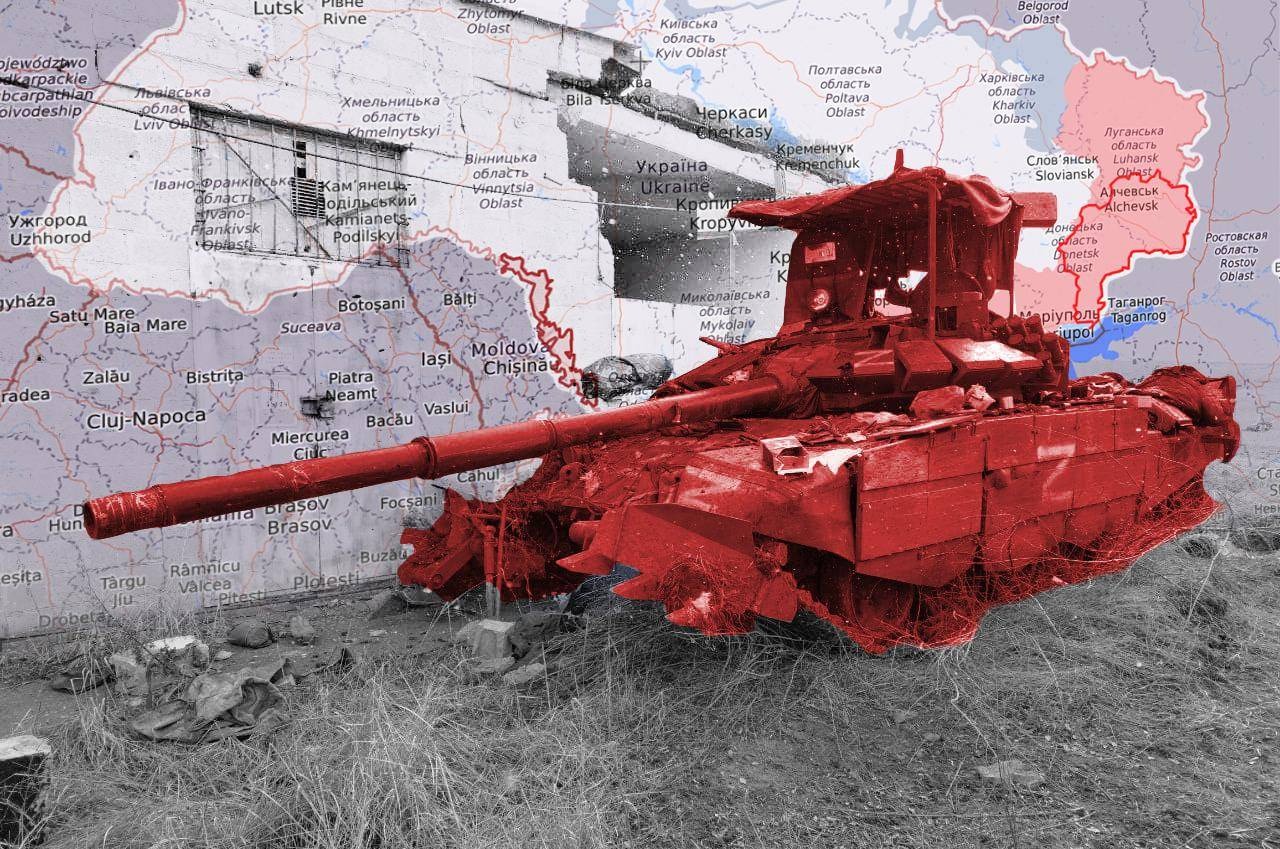
On 26 September, you also had the sabotage of three of the four pipelines that make up Nord Stream 1 and 2. The head of Russia’s parliamentary energy committee, Pavel Zavalny, estimated that it could take up to six months to fix the damage. Whilst no one has taken responsibility for the act, its clear effect is to make it more difficult for European governments to break ranks from the so-called ‘western alliance’.
Although there are other pipelines that can be used, it will hugely limit the potential for supplies from Russia to the European continent, taking the prospect of a quick restoration of gas supplies after a peace deal off the table. Whoever committed this act of sabotage, its likely intention was the stiffening of the western alliance by force. Of course, Europe are mere ‘collateral damage’ in all this.
The latest shift in the balance of forces has led to various western analysts crowing that this was the moment that “Moscow’s pressure campaign began to lose its potency.” Energy prices had peaked, Putin had played his best cards, and this had so far failed to break the unity of the West. Russia, moreover, had made the mistake of cutting off its main source of income: sales of energy to Europe.
There are reports that Russia’s budget surplus has fallen sharply from around 500bn Rbs in the first 7 months of the year to a cumulative total of 137bn by the end of August. Economists have speculated that this must be down to a sharp decline in oil and gas revenues. The pressure on Russia, therefore, will certainly be ramping up.
However, as Foreign Policy points out, a future without the possibility of being able to export energy to its main customer may well cause Russia some quite serious problems in the long run, “but the long run is different than a looming winter with no fuel.” Additionally, as we have explained, this war has become an existential question for Putin. Defeat could mean the end of his rule.
As with any war, it is very difficult to predict the outcome of this conflict. All that we can be certain of is that it is leading to the relative weakening of the power of both Russia and Europe on the world stage, and it will foment an immense wave of the class struggle on the European continent.
This winter is going to bring a huge amount of pain to the working class in the form of spiralling prices and shortages of energy and essential goods, and they will have no choice but to fight back. Hundreds of millions will be faced with the choice between heating or eating, but many will choose a third option: that of a struggle to change things for the better for themselves. We are looking at an incredibly explosive winter across the whole of the European continent, which will put an extreme amount of pressure on governments to either answer the needs of the general population or risk being ousted from office.
Faced with a scenario of an unmanageable economic crisis – with high inflation, spiralling debt and the closure of whole swathes of industry – the cracks we see today in the so-called ‘western alliance’ could become deep fissures under the stress of mass movements of the working class.

